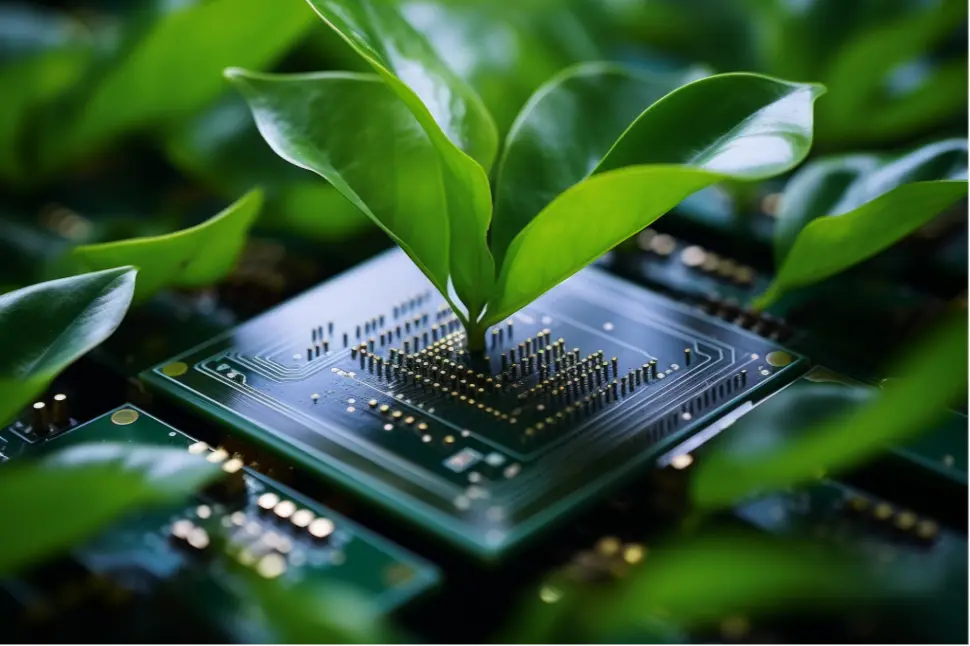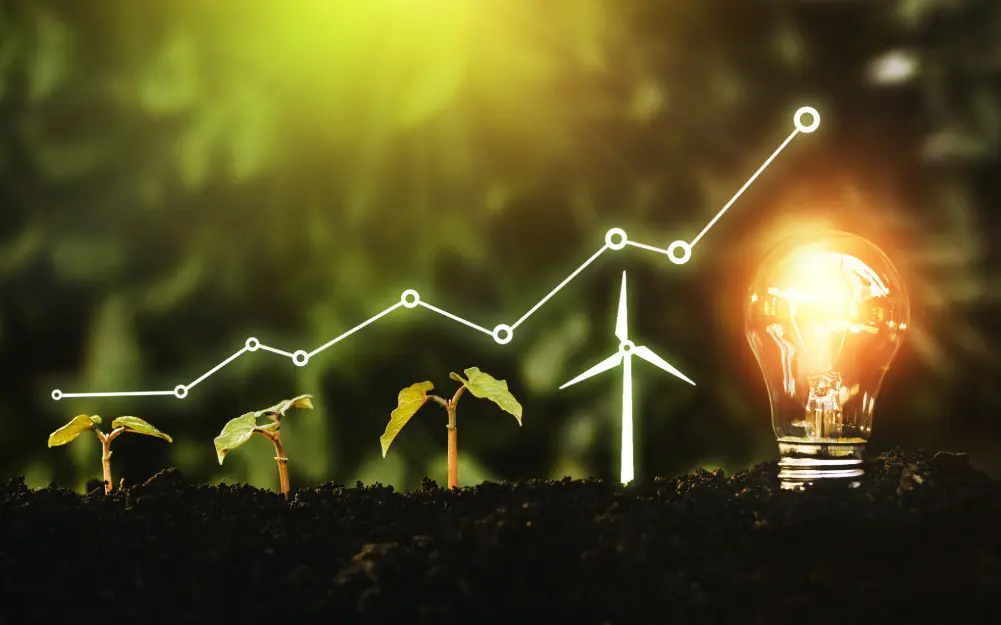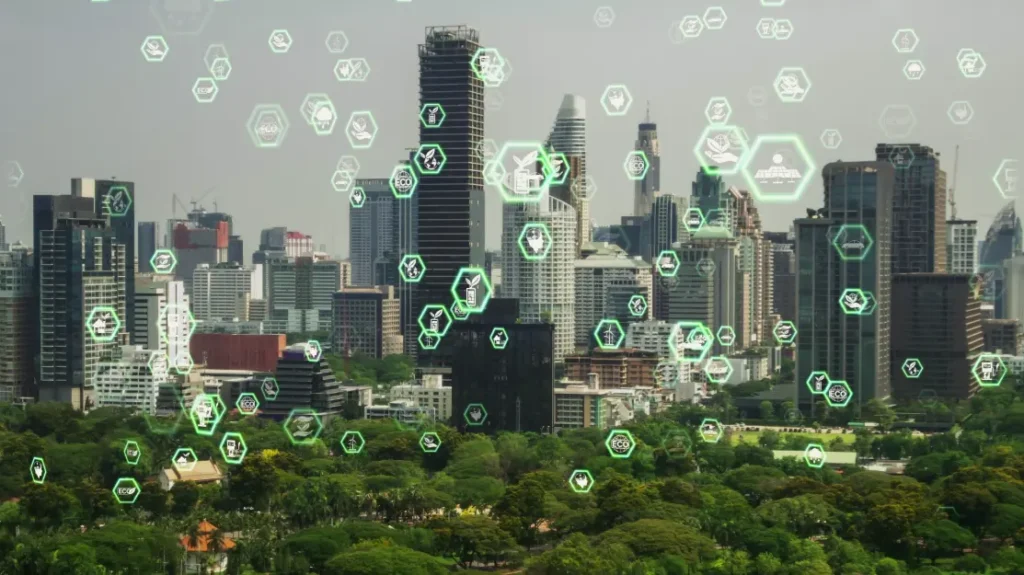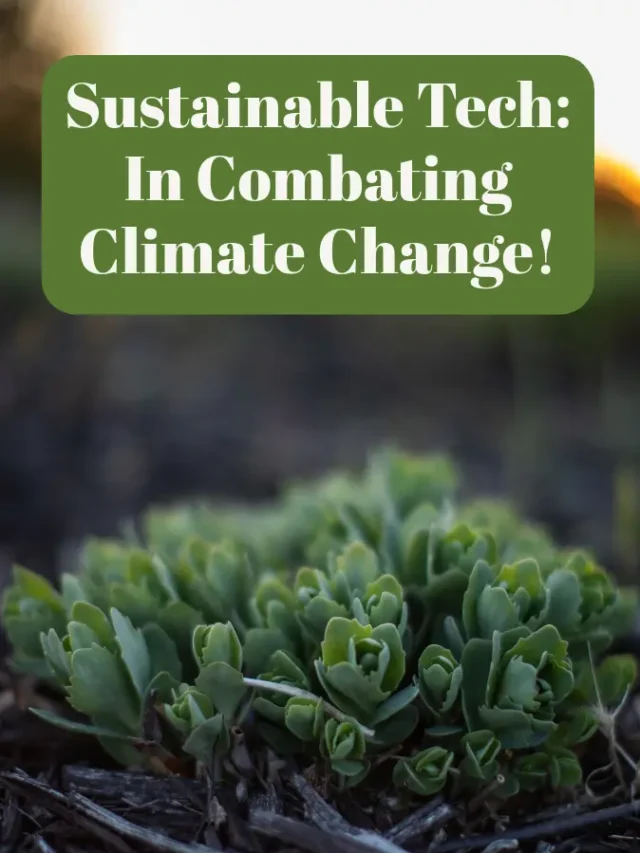Table of Contents:
Top Picks!
Related Stories
Discover how sustainable tech is transforming the fight against climate change. Explore advancements in renewable energy, green manufacturing, smart cities, and AI in climate monitoring. Learn how these innovations contribute to a greener future and the critical role they play in reducing our global carbon footprint.
The alarming rate at which climate change is affecting our planet has reached a tipping point. Rising global temperatures, melting polar ice caps, and increasingly frequent natural disasters serve as stark reminders that immediate action is needed. Amid this growing crisis, technology has emerged as a powerful ally, offering innovative solutions that could turn the tide in our favor. Sustainable technology, in particular, is becoming a cornerstone in the global effort to combat climate change. By harnessing the potential of renewable energy, green manufacturing, smart infrastructure, and data-driven climate monitoring, sustainable tech provides a path forward in our quest to preserve the planet for future generations. #SustainableTech #ClimateChange #GreenManufacturing #RenewableEnergy
Understanding Sustainable Technology!

Sustainable technology refers to innovations designed to meet the needs of the present without compromising the ability of future generations to meet their own needs. It involves the development and use of tools, systems, and processes that minimize environmental impact, promote resource efficiency, and contribute to the long-term sustainability of the planet.
Unlike traditional technologies, which often prioritize efficiency and profitability over environmental considerations, sustainable tech integrates ecological principles into its very foundation. This means reducing waste, lowering carbon emissions, and utilizing renewable resources. For instance, traditional power generation methods rely heavily on fossil fuels, which contribute significantly to greenhouse gas emissions. In contrast, sustainable technologies like solar panels, wind turbines, and energy-efficient appliances aim to reduce our dependence on non-renewable resources and mitigate their environmental impact.
Several examples of sustainable technologies currently in use include electric vehicles (EVs), which produce zero emissions, and green buildings that utilize eco-friendly materials and energy-efficient designs. Water-saving technologies like drip irrigation systems also play a crucial role in reducing water waste in agriculture. Moreover, advancements in biotechnology have led to the creation of biodegradable plastics and other sustainable materials, further showcasing the diverse applications of sustainable tech in various sectors.
Renewable Energy Solutions!

Renewable energy is at the forefront of sustainable technology, offering a viable solution to reducing carbon emissions and mitigating climate change. Unlike fossil fuels, which release large amounts of CO2 when burned, renewable energy sources like solar, wind, and hydropower generate electricity without contributing to the greenhouse effect.
Solar energy, for instance, has seen remarkable advancements in recent years. Innovations such as floating solar farms, which are installed on bodies of water, maximize space efficiency and reduce land usage. These farms also help in reducing water evaporation and improve energy efficiency. Similarly, wind energy has evolved with the development of offshore wind turbines, which harness stronger and more consistent winds at sea, thereby generating more power. Hydropower, one of the oldest forms of renewable energy, has also benefited from technological improvements, such as advanced turbine designs that minimize environmental disruption and enhance energy capture.
The impact of these technologies on global carbon footprints is significant. According to the International Renewable Energy Agency (IRENA), renewable energy accounted for nearly 29% of global electricity generation in 2020, up from 26% in 2018. This increase in renewable energy adoption has been instrumental in reducing global CO2 emissions, which saw a 2.6% decline in 2020, the largest annual reduction since World War II.
Advanced battery storage systems are another critical component of the renewable energy revolution. These systems store excess energy generated during peak production times (e.g., midday for solar power) and release it during periods of high demand or low production, ensuring a steady and reliable energy supply. Projects like Tesla’s MegaPack and Australia’s Hornsdale Power Reserve have demonstrated the potential of large-scale battery storage to stabilize energy grids and reduce reliance on fossil fuels.
Green Manufacturing and Circular Economy!

The manufacturing sector is a significant contributor to global carbon emissions, primarily due to the energy-intensive processes and waste generation associated with traditional manufacturing methods. However, technology is transforming this sector by promoting greener practices and fostering the development of a circular economy.
Green manufacturing involves the use of eco-friendly materials, energy-efficient processes, and waste minimization techniques to reduce the environmental impact of production. For example, 3D printing technology allows for the precise production of parts and products with minimal material waste, reducing the need for excessive raw material extraction. Additionally, innovations in material science have led to the creation of sustainable alternatives to traditional materials, such as bioplastics and recycled metals.
The circular economy is a model that aims to eliminate waste by keeping products and materials in use for as long as possible. This is achieved through recycling, refurbishing, and reusing materials, thereby creating a closed-loop system that minimizes the need for new resource extraction. Companies like Apple and HP are leading the way in implementing circular economy principles in their manufacturing processes. Apple, for instance, has committed to using 100% recycled aluminum in the production of its MacBook lineup, while HP has launched a line of printers made from recycled plastic.
Case studies of successful circular economy implementations further highlight the potential of this approach. The Dutch city of Amsterdam, for example, has adopted a circular economy strategy that aims to reduce the city’s consumption of new raw materials by 50% by 2030. This strategy includes initiatives such as promoting the use of recycled construction materials and encouraging businesses to adopt circular business models.
Smart Cities and Sustainable Infrastructure!

As urbanization continues to accelerate, the concept of smart cities has emerged as a key solution for sustainable urban development. Smart cities leverage technologies like the Internet of Things (IoT), artificial intelligence (AI), and big data to optimize energy use, reduce waste, and improve transportation, all of which contribute to a more sustainable urban environment.
IoT devices, such as smart meters and sensors, play a crucial role in monitoring and managing energy consumption in real time. By providing detailed insights into energy usage patterns, these devices enable more efficient energy distribution and help reduce overall consumption. AI algorithms can further enhance energy efficiency by predicting demand and optimizing energy generation and storage. For instance, AI-powered systems can adjust heating and cooling in buildings based on occupancy patterns, reducing energy waste.
Transportation is another critical area where smart city technologies are making a significant impact. Electric vehicles (EVs), combined with smart charging infrastructure, are helping to reduce urban air pollution and lower carbon emissions. Additionally, advancements in public transportation, such as AI-driven traffic management systems, are improving the efficiency of public transit networks, reducing congestion, and minimizing emissions from idling vehicles.
Green spaces and sustainable building materials are also integral to the development of smart cities. Incorporating green spaces into urban planning not only enhances the aesthetic appeal of cities but also provides numerous environmental benefits, such as reducing the urban heat island effect and improving air quality. Sustainable building materials, such as cross-laminated timber and recycled steel, are being used in the construction of eco-friendly buildings that have a lower carbon footprint compared to traditional construction methods.
Several cities around the world are leading the way in smart city development. For instance, Copenhagen aims to become the world’s first carbon-neutral capital by 2025 through initiatives like expanding its cycling infrastructure, investing in renewable energy, and implementing smart waste management systems. Similarly, Singapore has embraced smart city technologies to enhance its sustainability, with projects like the Smart Nation initiative, which focuses on using technology to improve urban living and reduce environmental impact.
The Role of AI and Big Data in Climate Monitoring!

Artificial intelligence (AI) and big data are playing an increasingly important role in monitoring and predicting climate change. By analyzing vast amounts of environmental data, these technologies enable scientists to gain a deeper understanding of climate patterns and develop more accurate climate models.
Machine learning algorithms, a subset of AI, are particularly useful in identifying complex patterns in climate data that may not be immediately apparent to human researchers. For example, machine learning can be used to predict extreme weather events, such as hurricanes and heatwaves, by analyzing historical weather data and identifying patterns that precede these events. This allows for more accurate and timely warnings, which can help mitigate the impact of such events on communities and infrastructure.
AI is also being used to optimize energy use and reduce emissions. For instance, AI-powered systems can analyze data from smart grids to identify inefficiencies and suggest improvements, such as adjusting energy distribution to match demand more closely. This can lead to significant reductions in energy waste and lower overall carbon emissions. Additionally, AI is being used to develop more efficient renewable energy technologies, such as wind turbines with AI-controlled blades that adjust their angle to maximize energy capture based on wind conditions.
Data-driven approaches are also crucial in developing more effective climate policies. By analyzing data on emissions, energy consumption, and environmental impact, policymakers can make more informed decisions about which strategies will be most effective in combating climate change. For example, the European Union’s Copernicus Climate Change Service uses satellite data and AI algorithms to monitor greenhouse gas concentrations in the atmosphere, providing valuable insights for climate policy development.
Several AI projects have made significant impacts on sustainability. Google’s DeepMind, for instance, has developed AI algorithms that have reduced the energy consumption of its data centers by 40%, demonstrating the potential of AI to enhance energy efficiency on a large scale. Similarly, IBM’s Green Horizon project uses AI to predict air pollution levels and optimize energy production, helping cities reduce their carbon footprints.
Sustainable Agriculture and Food Tech!

Agriculture is both a major contributor to climate change and a sector that is highly vulnerable to its effects. Sustainable agriculture and food technology are therefore critical in the fight against climate change, as they offer solutions to reduce the environmental impact of food production while ensuring food security for a growing global population.
Precision farming is one such technology that is transforming agriculture. By using GPS, IoT devices, and data analytics, precision farming allows farmers to monitor and manage their crops more efficiently, reducing the use of water, fertilizers, and pesticides. This not only lowers the environmental impact of farming but also improves crop yields, making agriculture more sustainable and resilient to climate change.
Vertical farming is another innovative approach to sustainable agriculture. By growing crops in stacked layers within controlled environments, vertical farms can produce food year-round without the need
References:
IPCC Special Report: Global Warming of 1.5°C: This landmark report underscores the urgency of addressing climate change and highlights the potential of technology to mitigate its effects. https://www.ipcc.ch/sr15/
The World Bank: Climate Change Knowledge Portal: This portal offers a wealth of data and information on climate change, including the role of technology in adaptation and mitigation. https://climateknowledgeportal.worldbank.org/
United Nations Environment Programme (UNEP): Climate Technology Centre & Network (CTCN): This resource focuses on promoting the development and transfer of climate technologies. https://www.ctc-n.org/
Renewable Energy
International Renewable Energy Agency (IRENA): This organization provides comprehensive information and analysis on renewable energy technologies and their potential to combat climate change. https://www.irena.org/
National Renewable Energy Laboratory (NREL): This U.S. lab conducts research and development on renewable energy and energy efficiency technologies. https://www.nrel.gov/
Solar Energy Industries Association (SEIA): This trade association promotes the growth of solar energy in the United States. https://www.seia.org/
Energy Efficiency
American Council for an Energy-Efficient Economy (ACEEE): This non-profit organization advances energy efficiency policies and programs. https://www.aceee.org/
Energy Star: This program, run by the U.S. Environmental Protection Agency (EPA), helps consumers and businesses identify energy-efficient products. https://www.energystar.gov/
Lawrence Berkeley National Laboratory (LBNL): Energy Efficiency & Renewables: This lab conducts research on energy efficiency and renewable energy technologies. https://eesa.lbl.gov/
Carbon Capture and Storage
Global CCS Institute: This organization promotes the development and deployment of carbon capture and storage technologies. https://www.globalccsinstitute.com/
Carbon180: This non-profit organization advocates for policies that support carbon removal technologies. https://carbon180.org/
Sustainable Transportation
International Transport Forum (ITF): This intergovernmental organization focuses on transport policy and sustainable mobility. https://www.itf-oecd.org/
Smart Cities & Technology
C40 Cities Climate Leadership Group: This network of major cities is committed to addressing climate change. https://www.c40.org/
Smart Cities Council: This organization promotes the development of smart cities and the use of technology to improve sustainability. https://smartcitiescouncil.com/












